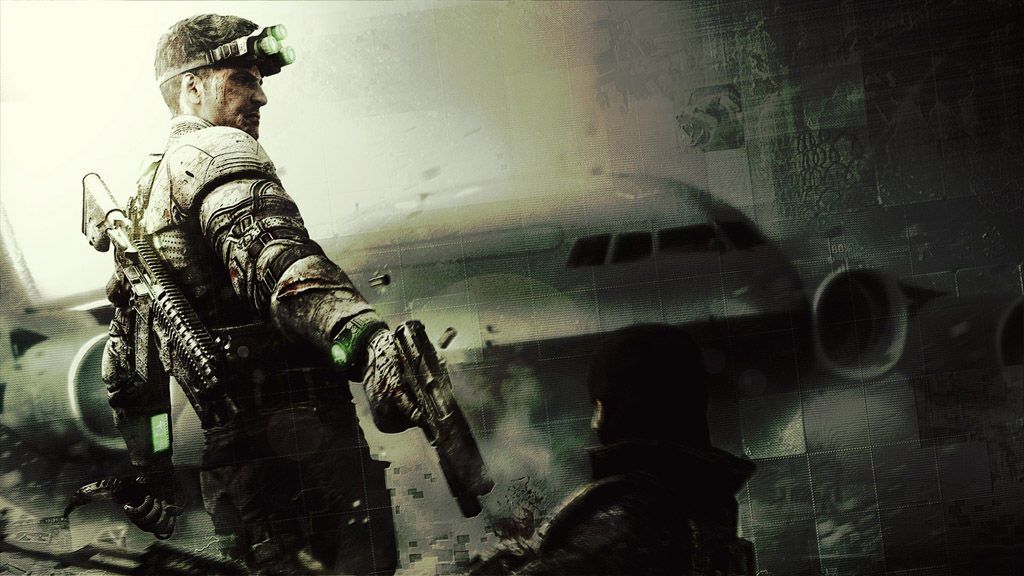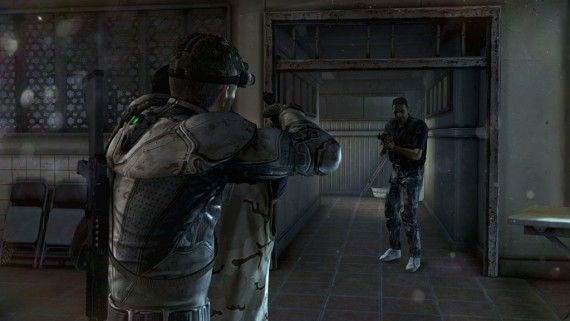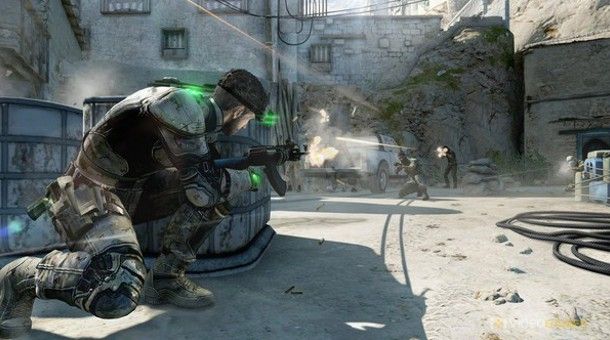Splinter Cell is one of those rare franchises where there just hasn’t been a bad title. Sure, fans are quick to name one as their least favorite or recite various issues, but not a single entry in the series has been anything less than great. Perhaps that makes it interesting that the latest game, Splinter Cell: Blacklist, is touted as improving upon multiple aspects of its predecessor’s gameplay. From the hub to loadouts or to Tri-Rotor to the economy system, we had the chance to sit down and experience it all with game director Patrick Redding at PAX East.
One of Blacklist’s biggest features is its deep customization that allows players to tailor the experience according to their style. Multiple loadouts provide this opportunity, with different configurations playing different roles. A stealth one, for instance, would include boosts in lack of visibility and noise, less armor, different gadgets to increase vision and, of course, the Tri-Rotor. Gameplay wise, much of what made the past games so enthralling is back, along with a few new tricks. Returning is the ability to hide and drag bodies, a mechanic that should never have disappeared in the first place. Additonally, there’s free running (or parkour), a psuedo-bullet time mode and the Tri-Rotor, a mini remote control spy drone to poke around unexplored areas.
Instead of being confined to a general region, Blacklist takes place all over the world thanks to Sam’s new role as Commander of Fourth Echelon, a mobile team that travels around to various locales on mission. We’ll see missions in Europe, North America, South America, Middle East and more. To select these, there’s a world map in between missions where you can select either single player or co-op and see online friend’s presence on the map. Before launching a mission, there’s an interesting launch briefing that raises the stakes of what’s ahead by providing crucial backstory.
Blacklist has its own in-game currency to unlock weapons and gadgets. As you complete sections, the game can actually detect, identify and reward you for actions that fit a particular style, earning you something called “Ghost Points”. These points get converted to dollars and are what are used in customization, applying equally to single-player, co-op and multiplayer and Spies vs. Mercs. While play styles can be alternated, including Ghost, Panther and Assault, specializing in one allows you to hit threshold faster to gain big bonuses.
Lucky for those who plan to stick to stealth, it comes as relief that the play type still has a substantial role. “We were trying to make a splash with as big of a mass media audience as we could,” said Redding. “Now that we’ve done that and we’re on everybody’s radar, we’re a lot more comfortable saying ‘we’re a stealth game’. It’s still fundamentally a stealth action game and the only thing that’s really changed is we’ve given you that many more tools to help you survive if you get detected.” One of the levels that we played, although adaptable to any play style, was clearly built for stealth and it showed. On top of a rainy rooftop at night, Sam had to traverse through beams, stairs and walls as he avoided detection. It’s clear that levels were designed for stealth first and for those who want to run and gun second -- preferable in a game like this.
With Blacklist, the team was trying to bring back a lot of elements of the original Splinter Cell that they stepped away from. “It makes our economy system more meaningful if you have a big range of upgrades,” said Redding. “By starting in the night vision goggles, which are the classic NVGs, it establishes the baseline of what a guy like Sam Fisher needs to have and you can choose to layer new features on top of that.” Of course, simply having the night vision goggles is a possibility and may be all classic Splinter Cell players need.
When asked if Blacklist was a reboot, Redding said, “I wouldn’t call it a reboot if only because we’re preserving the continuity, but it’s a perfect jumping off point.” It may be just that, as its execution seems to bring together all of the pieces from the different incarnations of Splinter Cell and lets players enjoy it based on their own style. Splinter Cell is good enough that it may never need a reboot, but with an exciting approach and addition of multiple new dynamics, it ensures that the series remains fresh long past its grizzled protagonist. If it plays as good as it looks, Blacklist may be the best Splinter Cell yet.




